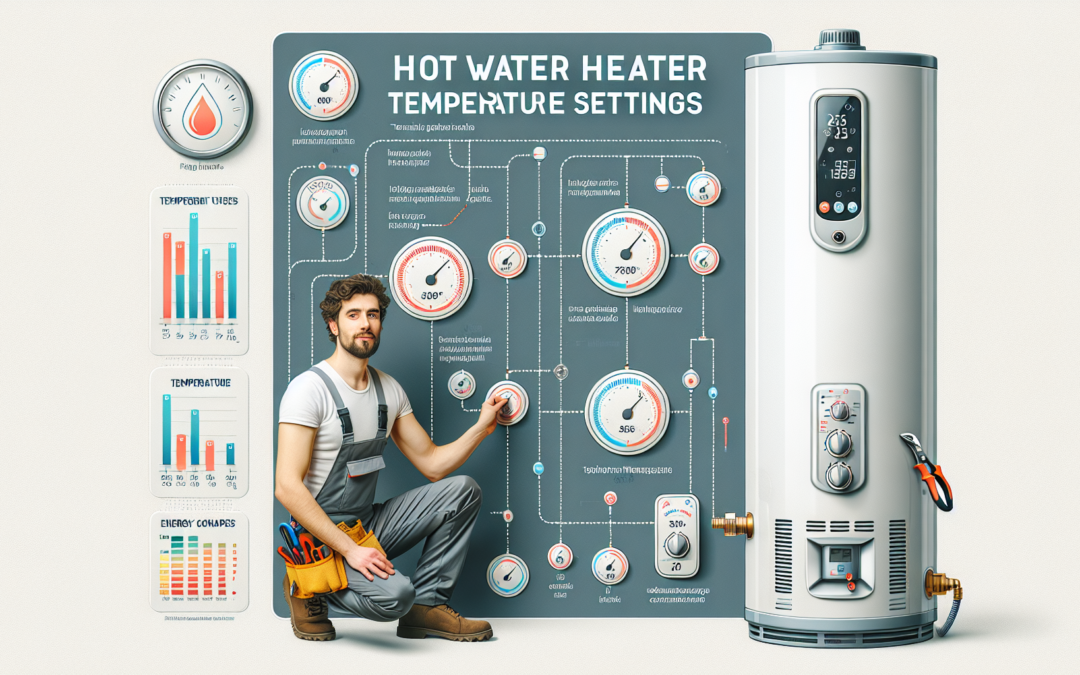One of the most crucial components of any home is the hot water heater, a piece of equipment often overlooked until it malfunctions. It’s essential to understand its temperature settings, for both your comfort and safety. By knowing how to adjust and maintain the right temperature, you can ensure hot water is available when you need it, from dishwashing, loads of laundry to a comforting shower.
Understanding your hot water heater settings can also help you manage your heating bill efficiently. And of course, if you have children or vulnerable individuals in your household, deciphering these settings becomes even more important for their safety. Let’s explore this topic in detail – with the Dayton plumbers you trust.
Did you know that maintaining the correct hot water heater temperature can lead to energy savings, longer appliance lifespan, and decreased risk of bacteria growth? Let’s delve deeper in knowing everything you need to know about hot water heater temperature settings.
Understanding your hot water heater temperature settings
Hot water heaters typically come with a pre-set temperature by the manufacturer. Commonly, this is somewhere between 120 and 140 degrees Fahrenheit. At this temperature, your hot water is hot enough for most household tasks and hygienic needs, yet not so hot as to risk burns or overheating. Understanding these temperature settings is the first step towards ensuring efficiency and safety.
A higher temperature would mean more energy consumption leading to higher utility bills while also posing a threat to aspects such as skin burns. On the other hand, a setting lower than 120°F can put you at risk from certain bacteria, including Legionella, which thrives at lower temperatures. Ensuring a balanced temperature is an important task that water heater repair professionals can assist you with.
Adjusting the temperature setting
Understanding how to adjust the temperature setting on your water heater ensures comfort, safety, and energy efficiency. For electric water heaters, the thermostat is often behind an insulation panel. For gas heaters, the thermostat is generally located outside at the bottom of the tank. Of course, always be sure to turn off the power before making adjustments to prevent accidents.
If your gas water heater is not working or your electric water heater is not working as expected, it could be because of incorrect temperature settings. Any concerns or doubts in this arena can be easily handled by seasoned professionals.
Energy savings
Lowering your hot water heater’s temperature can be one way to save on energy costs. For every 10 degrees, you decrease the temperature; you can save 3-5% in energy costs. However, dipping below 120 degrees Fahrenheit puts you at risk from bacteria, so it’s a delicate balancing act.
Additionally, proper thermostat settings can extend the life of your water heater, saving costs in the long run regarding water heater replacement or major repairs.
Reduced risk of scalding
According to the US Consumer Product Safety Commission, the maximum recommended residential water heater temperature is 120 degrees to reduce the risk of scalding. Infants, children, older people, and those with disabilities are more susceptible to hot water burns. Therefore, keeping your water temperature at a safe level can help prevent avoidable accidents.
Always test the water before use, especially when bathing children, and educate family members on safe water temperatures. More safety tips can be found here.
Preventing bacteria growth
Setting your hot water heater below 120 degrees Fahrenheit can put you at risk of Legionnaire’s disease, a form of atypical pneumonia caused by bacteria that thrive at lower temperatures. The warmer the water, the less able these bacteria are to thrive.
Experts say that the water heater should be set to at least 120 degrees Fahrenheit to prevent the growth of harmful bacteria such as Legionella. If you’re living with anyone who has a suppressed immune system or respiratory disease, consider increasing the temperature to 140°F — followed by the installation of mixing valves to prevent scalding.
Hot water heater temperature settings play a vital role in most daily activities. They not only provide convenience for daily chores but also play an integral role in ensuring a safe and healthy living environment. If you’re uncertain about adjusting these settings yourself or face continued issues with your water heater’s performance, don’t hesitate to contact the professionals at Dayton Plumbing Services. Book a quote today with our team for any concerns related to your Dayton Plumbing Services.

